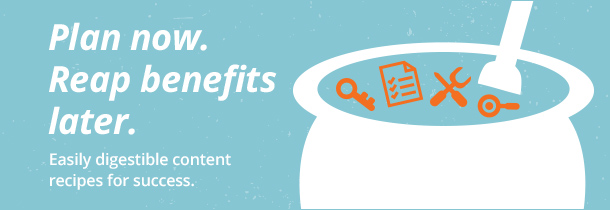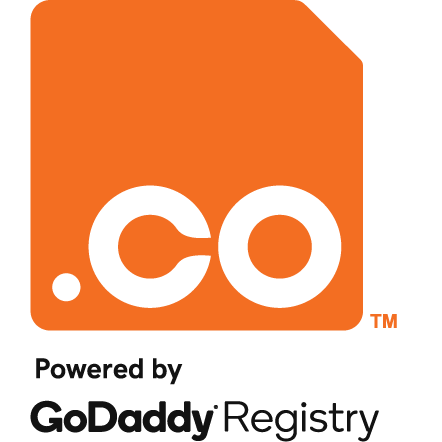Welcome to the final installment in our New Year’s Online Marketing Resolutions blog series! In our two previous installments, we’ve talked about how to perform a website evaluation and covered how to take your SEO & PPC strategies to the next level for 2015. Today, we’re going to cover a topic that never diminishes in importance: Content.
 We all know the age-old adage: Content is King. But, what does that expression really mean? King of what? Why is it important? Why does it rule?
We all know the age-old adage: Content is King. But, what does that expression really mean? King of what? Why is it important? Why does it rule?
Why Content is So Important
From a user experience standpoint, well-written content adds authority to your website and makes it exponentially more valuable to your users. Quality content will keep users on your site longer, by visiting subsequent pages and interactive with the site at a deeper level.
Great content is its own marketing tool—sites will want to link to it and cite it as a source, and visitors will want to share it on their social media accounts. This helps tell search engines that this content is strong and that your site is an authority on that subject matter.
Quality content which is highly relevant to your subject and integrates your goal keywords will also strongly aid in your SEO efforts.
Performing a Content Audit
The first step in developing a good content plan for your website is establishing a starting point. In order to do this, it’s necessary to perform a content audit. This does not need to be a long process; working your way through the following checklist will be enough.
- Duplicate Content
Hosting high-quality, original content on your website is a must-have. Duplicate content can be viewed as a “no-no” in the eyes of search engines, so make sure that whenever possible, your content is your own. Never plagiarize content that isn’t your own, and perform a duplicate content check using a tool if need be to determine if your content isn’t your own—and also to see if another site is using your own content without your permission.
- Content Quality
Merely publishing pages and pages of content on your website won’t accomplish your content goals. Content needs to be well-written, compelling, and of value to your site visitors. Ask yourself: would a site visitor want to share this on Twitter or email to a friend? Are they likely to finish reading the entire post or article, or leave the page after reading a few lines? Make sure your content doesn’t have grammatical errors, reads well, and doesn’t appear as if it was written by someone whose first language isn’t English. Writing quality, engaging content can be time-consuming and difficult, which is why there are thousands of professional copywriters out there. If you don’t have internal copywriters and know writing isn’t a strong suit, consider outsourcing. However, make sure not to scrimp because the quality will end up lacking. Sites like Odesk and Scripted make it for site owners to find good copywriters.
- Content Volume
Although content quality is more important than content volume, the amount of content is still important. Do you currently have a blog on your website? If so, great—you’re off to a great start! However, identify content gaps and use them as opportunities to house additional content, even if it’s not original. For example, say you’re an interior designer. In addition to your blog, consider adding relevant resources, like articles on how to arrange your furniture, choosing a color palette, etc. Don’t just stop at a blog—think creatively about what would be of use to your site visitors.
- Content Relevance
Although it may seem like a no-brainer, make sure your content is highly relevant to your website’s subject matter. Go back to your SEO goals—what keywords and subject clusters are you hoping to rank for? Make sure you have content targeting those topics, and that integrates your goal keywords and subjects.
- Content Share-ability
One aspect of a content plan that site owners often ignore is making sure specific content pages are easy to share. Social media shares help tell search engines how popular and relevant a piece of content is, so make it as easy as possible for your visitors to share content across their social networks. Include prominent links to allow readers to share to their Facebook, Twitter, Google+ and Pinterest accounts. Also make it easy for them to “Email to a Friend.” A mistake many site owners make is posting those links at the end of a blog post or article, but it’s a good idea to place buttons at the top of the post as well. Do everything in your power to increase your likelihood to rack up social shares as much as possible.
- Site Structure
To benefit the most from your blog, make sure it is hosted at yoursite.com/blog instead of a sub-domain or other site. Make the blog easy to access by placing a prominently labeled link in the top navigation instead of burying it within the footer. If you decide to post additional articles and resources on your website, it’s a good rule of thumb to make them no deeper than two clicks from your website. Consider creating an “Articles” or “Resources” link in your top navigation. When it comes to structuring your content pages, make sure your URLs are optimized (make them short, easy-to-read and descriptive).
- Frequency of Updated Content
Many well-intentioned site owners start a blog on their website and then forget about it. Make sure you are blogging regularly—ideally once a week at minimum. Later on in this post we will talk about how to generate content ideas and create a content schedule so you can avoid sitting down at your computer to write a blog post and drawing a blank.
- Content Pages as Link Destinations
The amount of sites linking back to your site’s content pages is a good indicator of how strong your content is. When you are obtaining links to your website, don’t forget about your content pages. Instead of just linking to your homepage, link to your blog and other content pages.
Creating a Content Plan
Now that you’ve worked your way through the checklist, you’ve got a good idea of your site’s weaknesses.
Next, it’s time to prioritize and come up with a content plan. First, go about addressing problems you came across during your audit, such as getting rid/rewriting duplicate content. Then, it’s time to get organized and come up with a fleshed-out content plan.
Questions you’ll want to ask yourself and address within your content plan:
- What sort of content would my site visitors find useful?
- Where does it make sense to put that content on my site?
- What format would my visitors “digest” best and find most engaging? A few content formats you can consider include in-depth, educational posts and articles, funny viral posts, infographics news & events posts, interviews, and “Around the Web” type of posts. It’s smart to use any data you may have about current content as a gauge—for example, check your Google Analytics content metrics to see what content pages currently perform well.
- How can I create this content? Do I need to hire writers? If so, what is my budget?
- What kind of timeline am I shooting for?
- How will I release this content—do I need a designer? A developer?
Generating Content Ideas
Once you’ve got your plan fleshed out and have established a basic project plan, the next step is to put on your creativity hat and brainstorm content ideas.
Begin by using the responses you came up with to the #1 and #2 questions listed above as a starting point.
A few helpful tips when brainstorming content ideas:
- Get out those markers and brainstorm on a whiteboard.
- Enlist the opinions of your team members—the bigger the brainstorming session, the more ideas!
- Paper the room. Bring print outs, posters, and any other campaign or brand reminder that will spark inspiration.
- No idea is a bad one—just write it down. You never know what kind of “seed” that “bad idea” will plant.
- Compile a huge list, then go about editing. Don’t spend time correcting/editing as you make your list; that can stop your “flow”.
- Don’t forget about other content types, such as videos and podcasts.
Once you’ve got your content idea list, edit and put those ideas into a spreadsheet.
Prioritize according to what’s best for your site. Note any important details you don’t want to forget (i.e., desired length, any sources you may use, title ideas, other relevant pages on the website you should link to from within the content, format ideas, etc.), assign it to a writer/resource/yourself, and give yourself a deadline.
Content Calendars
Once you have your giant list of content ideas, it’s a smart idea to create a content calendar. Even if you aren’t using outside resources, it helps you stay on track and set time aside to write. Tips on creating a content calendar:
- Integrate the calendar details in your favorite Calendar program you use (i.e., Google Calendar) so you will receive reminders when it’s time to work on those pieces.
- Share your calendar with anyone helping out on those pieces.
- Use Mondays to begin your most lengthy, time-intensive posts.
- Friday is a great day to write “weekly roundup” or “Around the Web” posts.
- Look at the bigger picture—if you’re launching a lot of site updates in a particular month, then don’t try and tackle the most time-consuming content ideas at the same time. You’ll only burn yourself out!
- Be realistic—don’t go from blogging once every few months to attempting to write three blog posts a week.
Productivity Tips
Here are a few helpful hints from a long-time professional copywriter:
- Block off time. As mentioned above, create a calendar and block off time to write. After all, that blog post isn’t going to write itself!
- Time yourself for each piece of content you write. How long does it take you to write content pieces? Don’t just time yourself once—track how long it takes you to write each type of post (i.e., news & events posts vs. educational pieces).
- Research, research, research. You don’t want to put information in your content pieces (especially if it is an informative or educational piece) that is simply not true. Educate yourself by doing plenty of research on that particular topic.
- Take breaks. If you’re writing a long article or post, take breaks throughout, or consider coming back to it to avoid burnout. Similarly, if you’ve got writer’s block, step away from the computer and come back to your piece later.
- Edit later. Go with your creative flow instead of slowing down to dissect and edit every problem or error. Simply give yourself plenty of time during the editing process to thoroughly make improvements, clean up bad grammar, and clean your piece up.
- Know your audience. If your site visitor is more likely to like a short, top-ten list type of post, then keep that in mind when writing other content pieces—break up long pieces with lots of white space, bullet points, and graphics. On the other hand, if your readers enjoy in-depth, resourceful content pieces, then make sure you go the extra mile to make sure your piece is detailed, informative, accurate, and not too “basic”.
- Don’t rush. Writing quality content takes a lot of time and effort. Don’t expect to crank out a 2,000 word blog post in an hour. Although it may sound easier said than done, take time and enjoy the process. Pour yourself a cup of coffee, put on some music, and enjoy writing.
- Know your strengths and weaknesses. If you’ve been struggling for the past week to write that in-depth how-to blog post—several times trying and abandoning it—then just shelf it for a while and move on. Outsource the job or move on to another piece entirely.
Sharing Your Content with the World
As you start writing and publishing all of your great content, don’t forget to share it with the world. Publish it on your social media pages, but don’t stop there. Ask your colleagues and friends and family to do the same. Take advantage of existing relationships to get your content as much publicity as possible. Do this for every post.
If you feature a link to another blogger’s post within your piece, consider reaching out to them on Twitter. Let them know how much you enjoyed their post and included a link within your piece, and nicely ask for them to tell their followers about yours as well.
Keep it Up
Give yourself a pat on the back—you’ve performed a content audit, come up with a content plan, generated creative content ideas, and created a content calendar. GO YOU! Now, get to writing, and make sure you keep it up. All of 2015 is ahead of us—put those content resolutions into action and keep on creating!
Happy writing!




